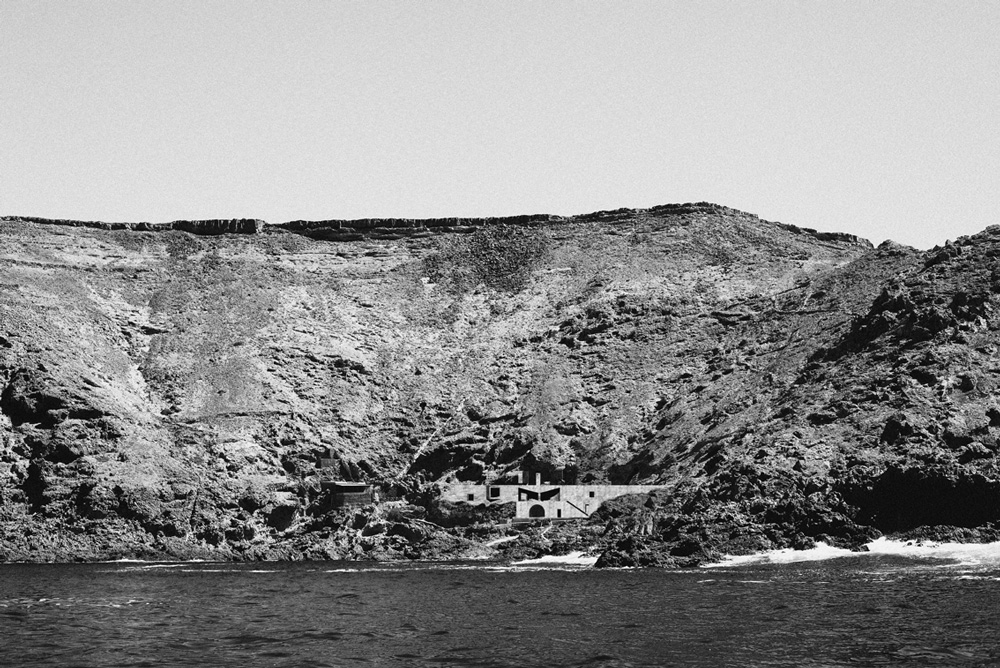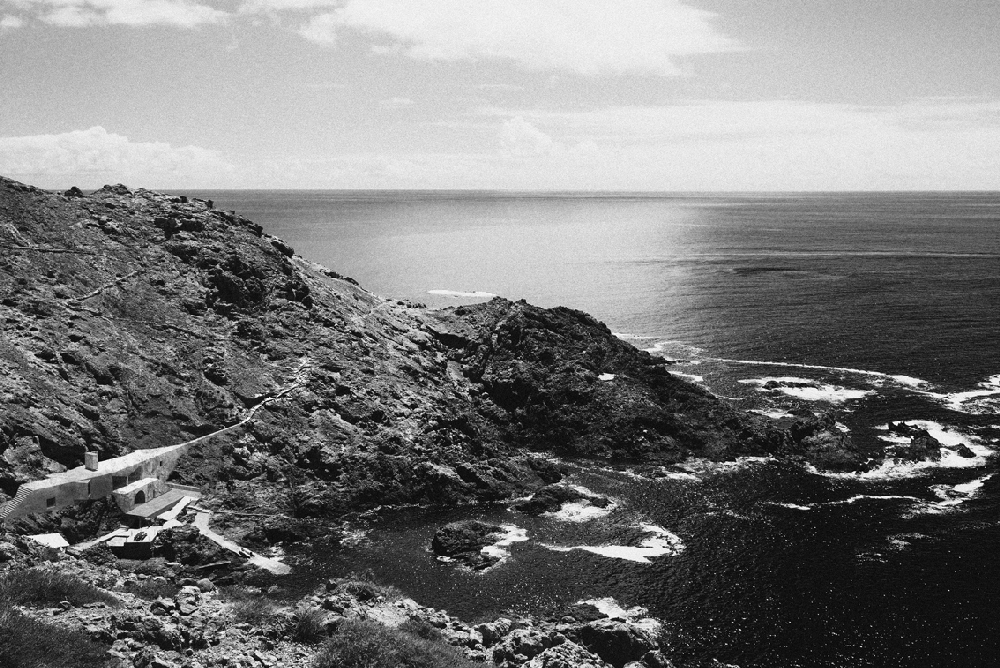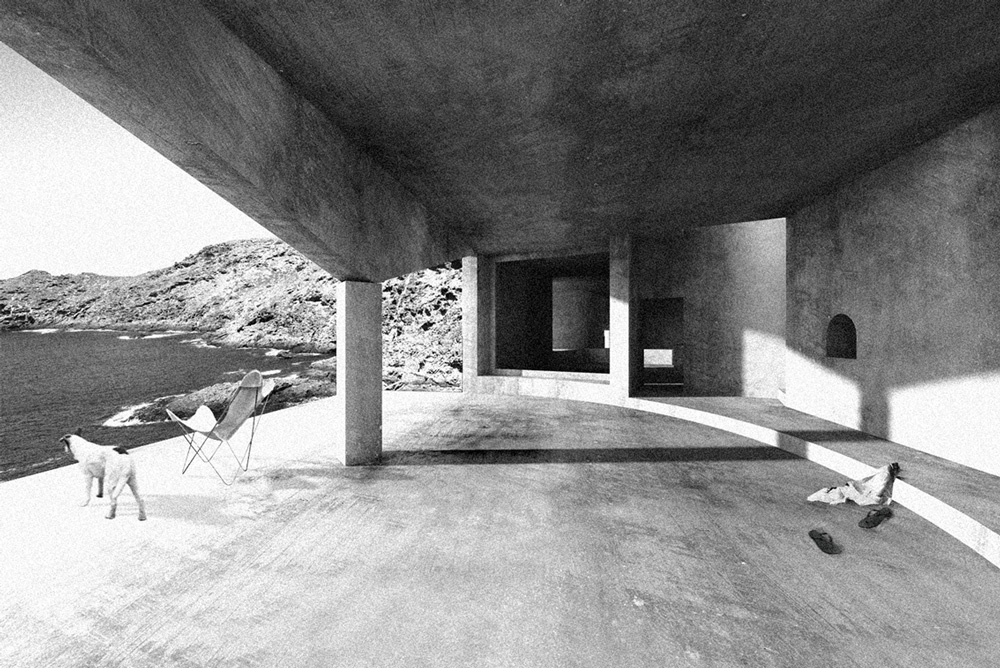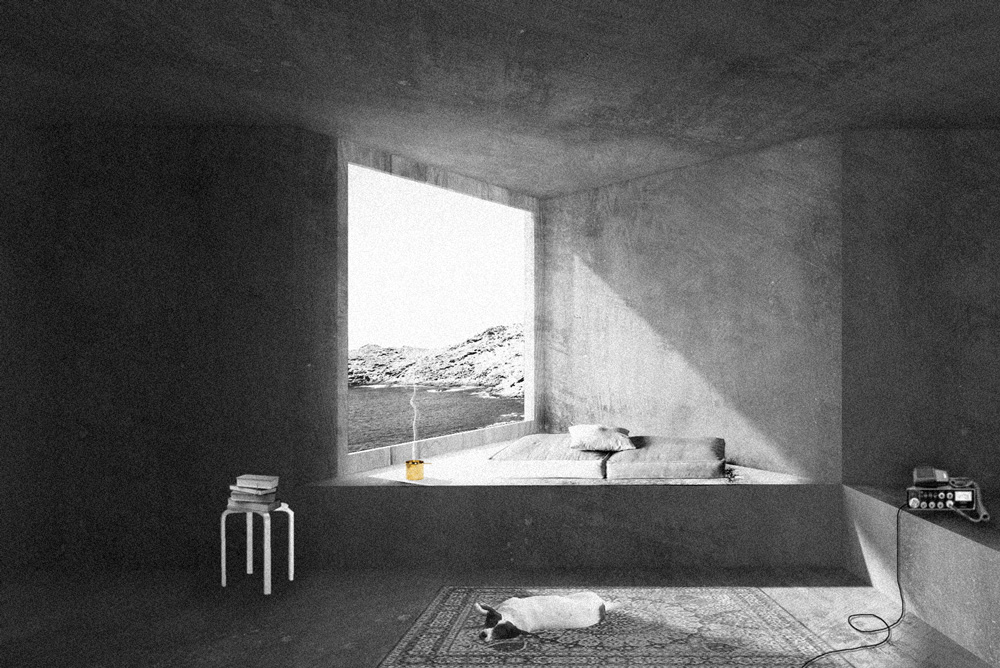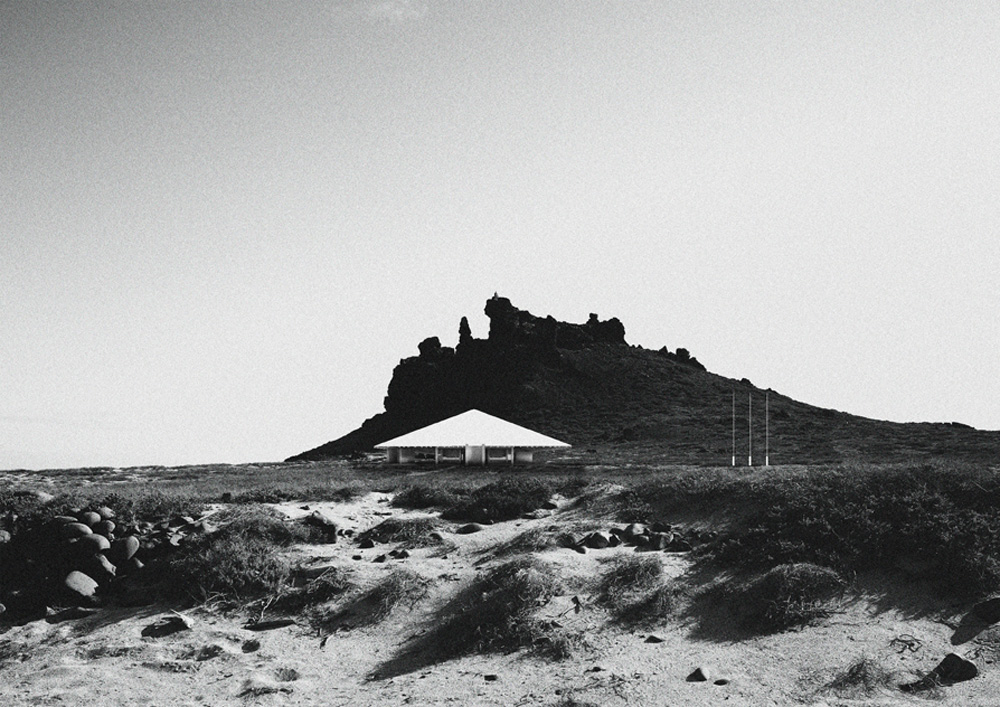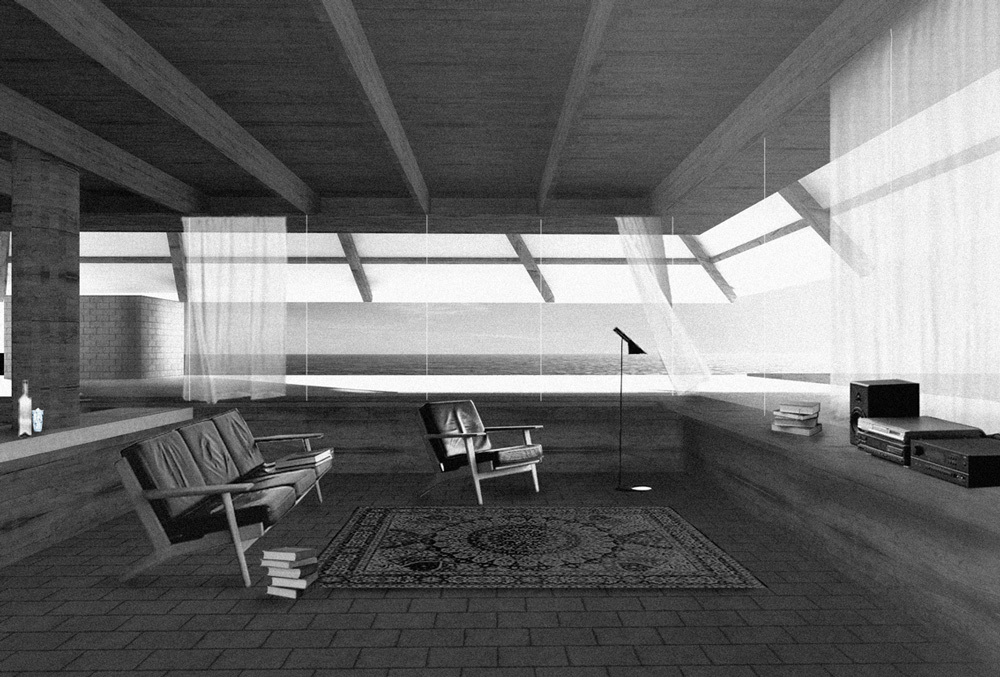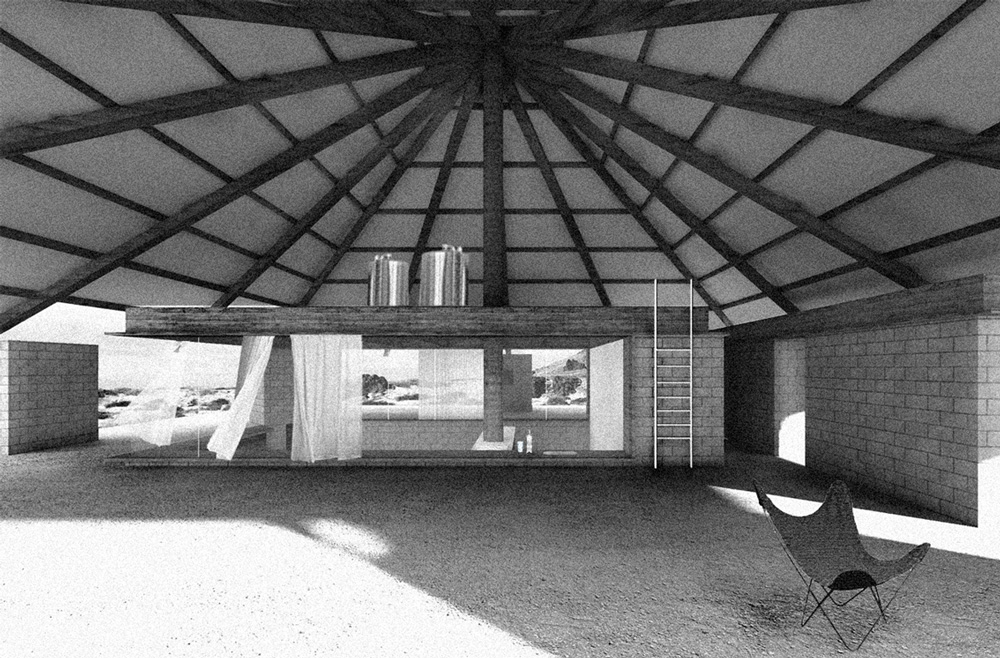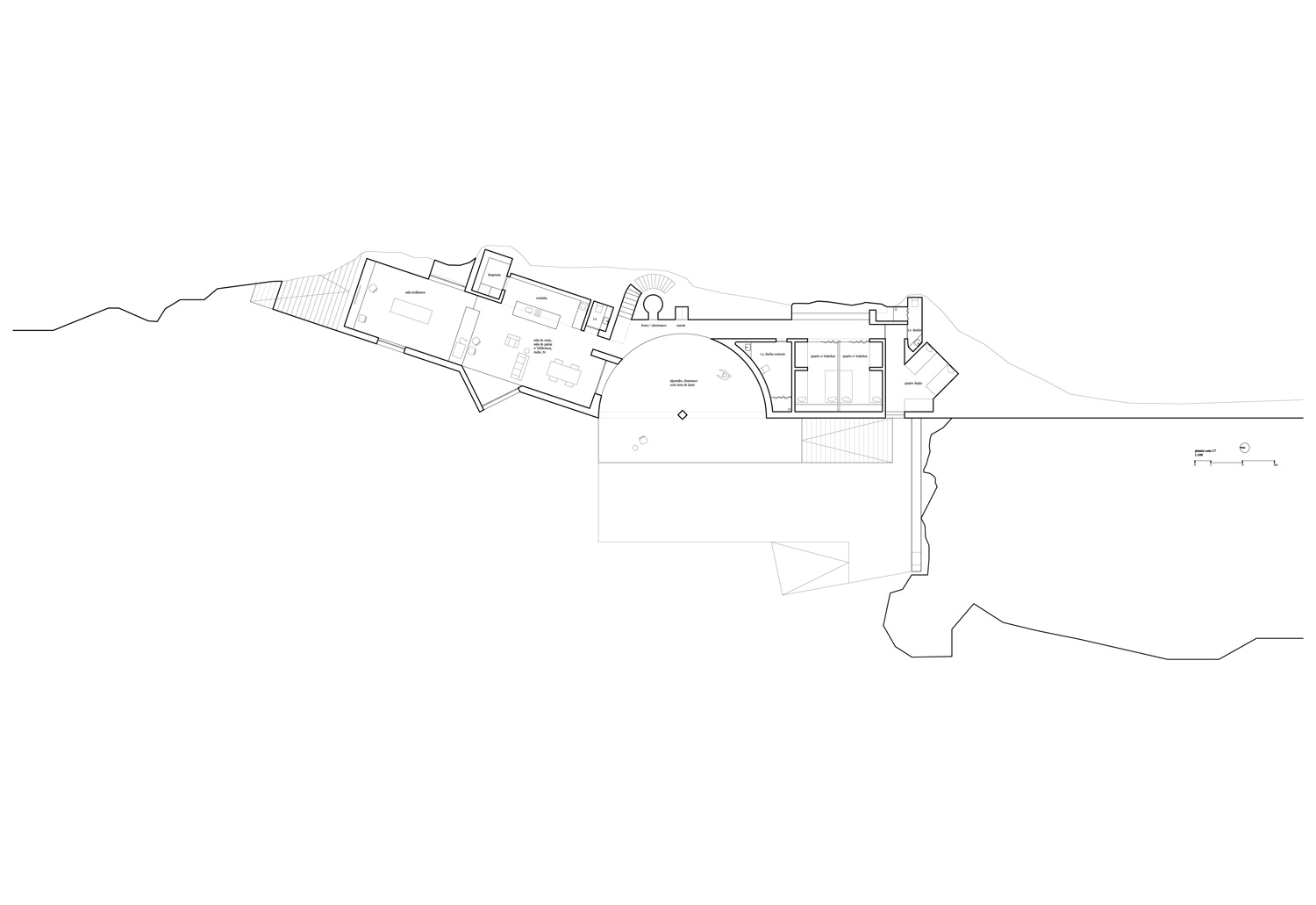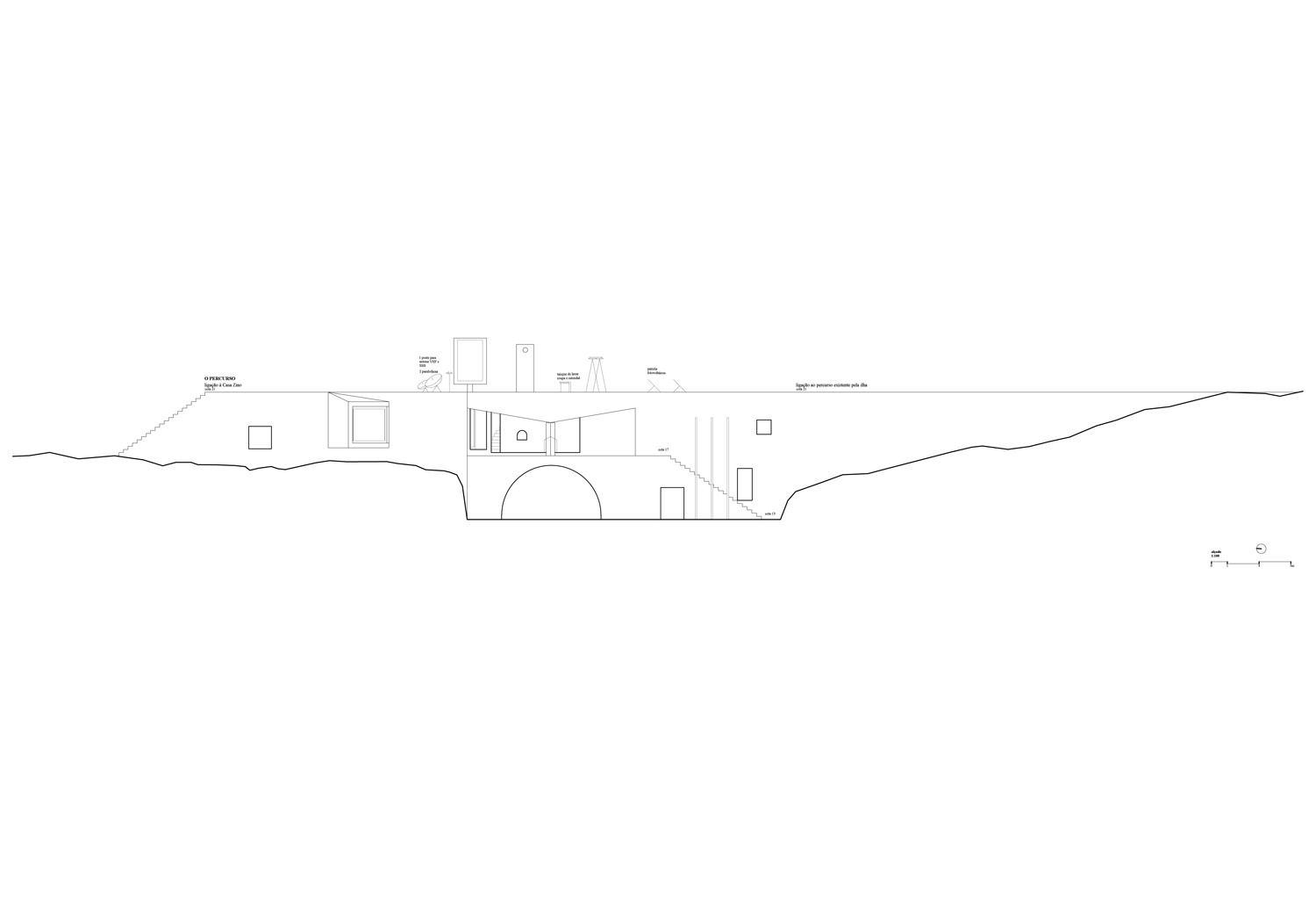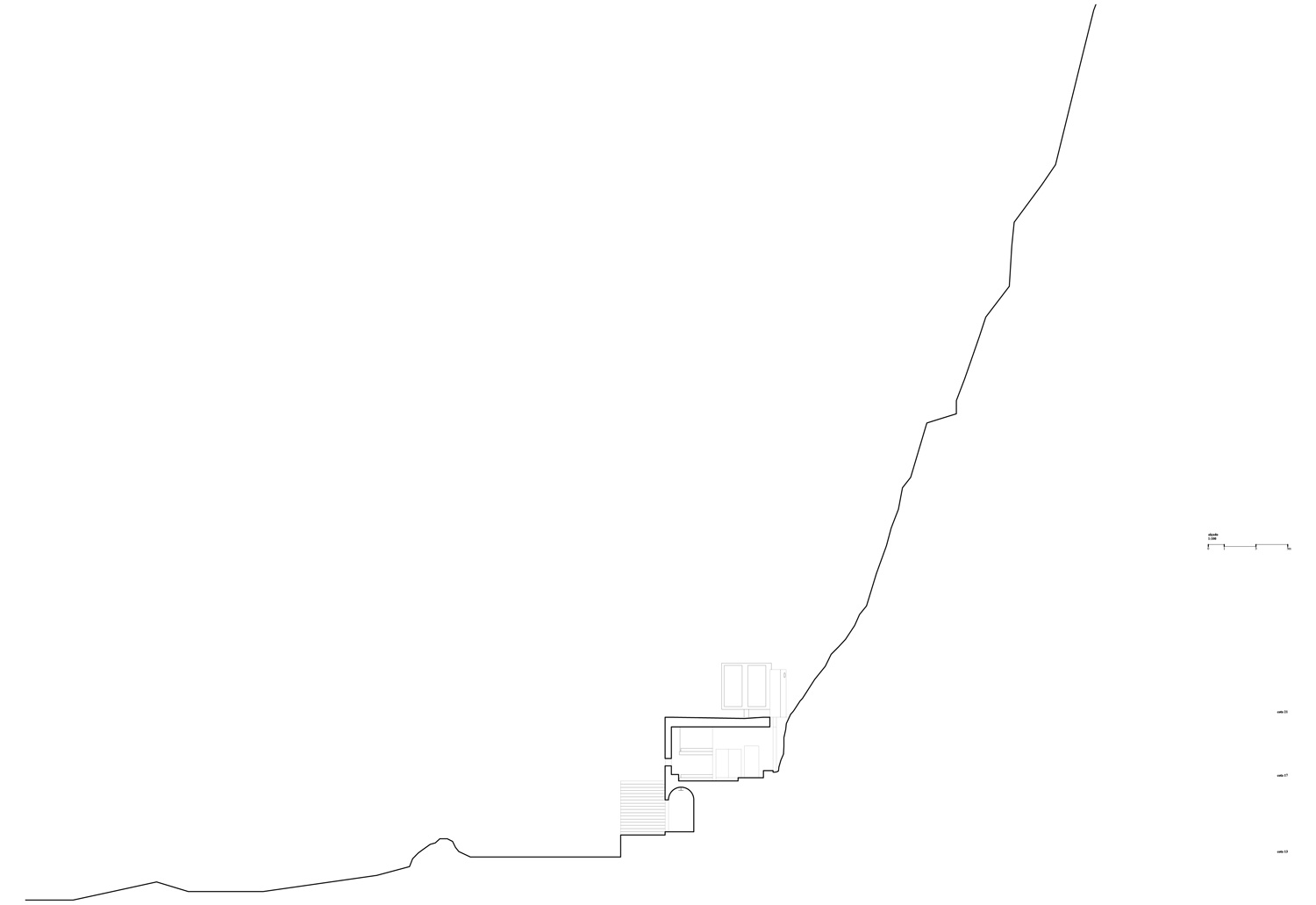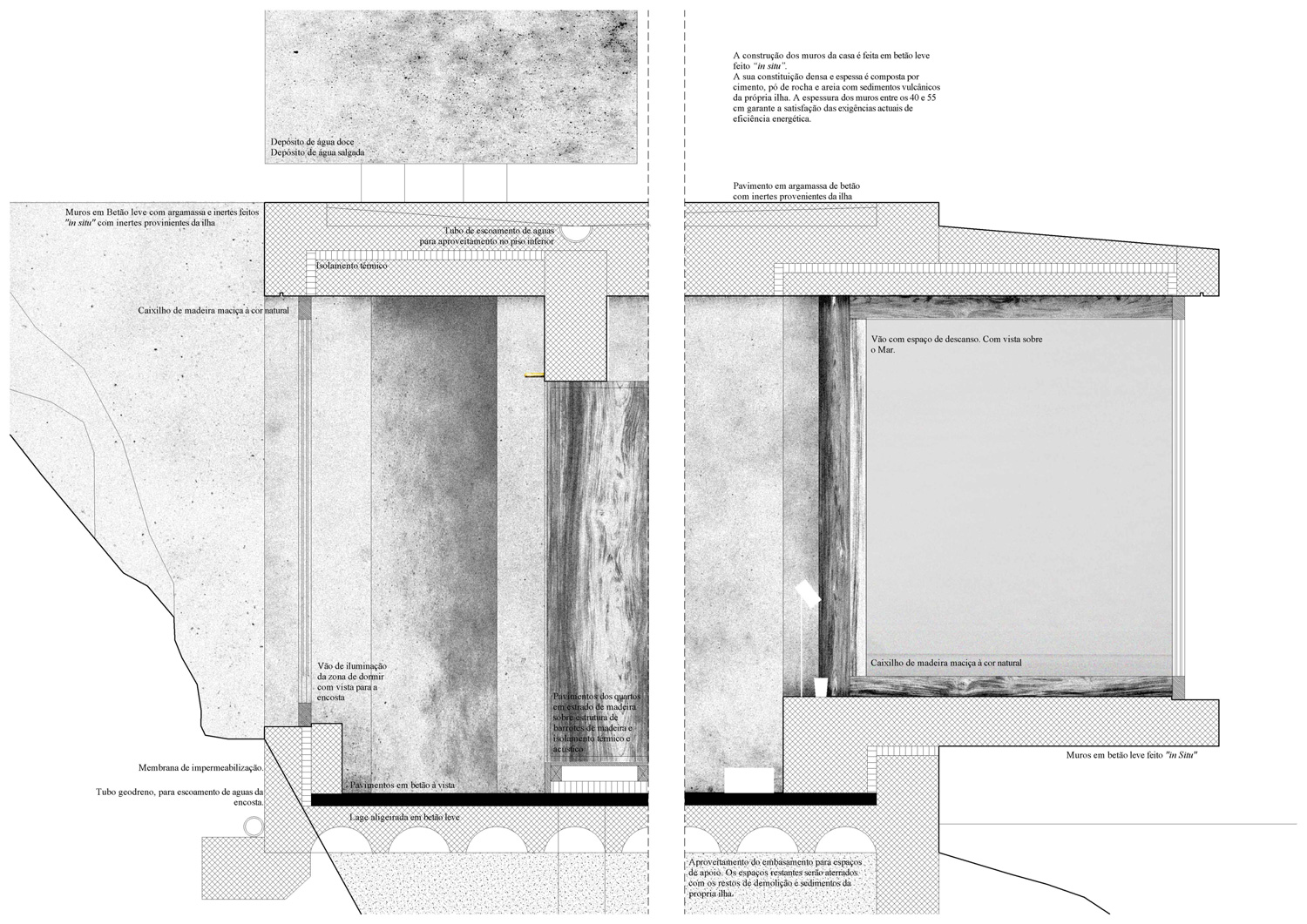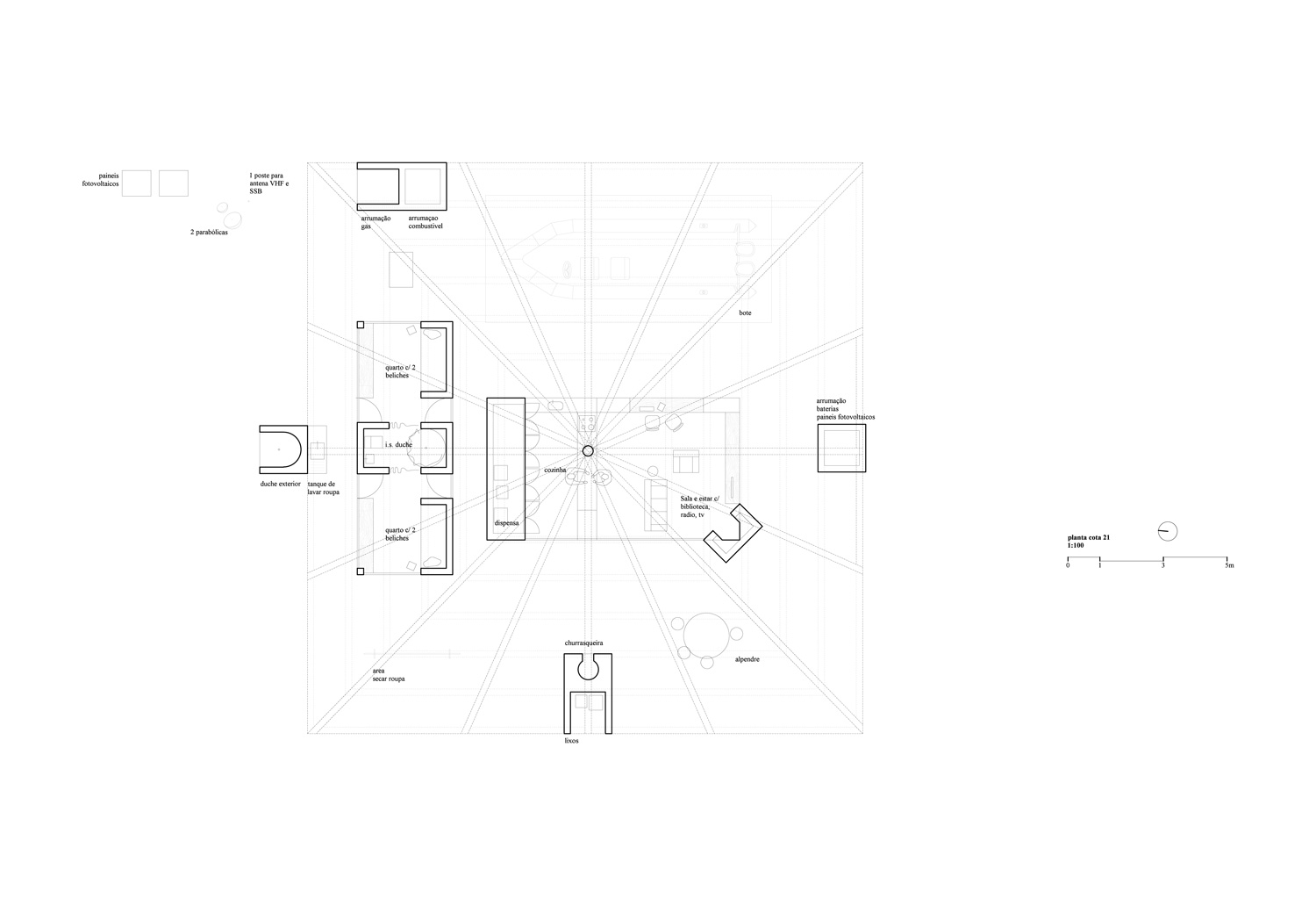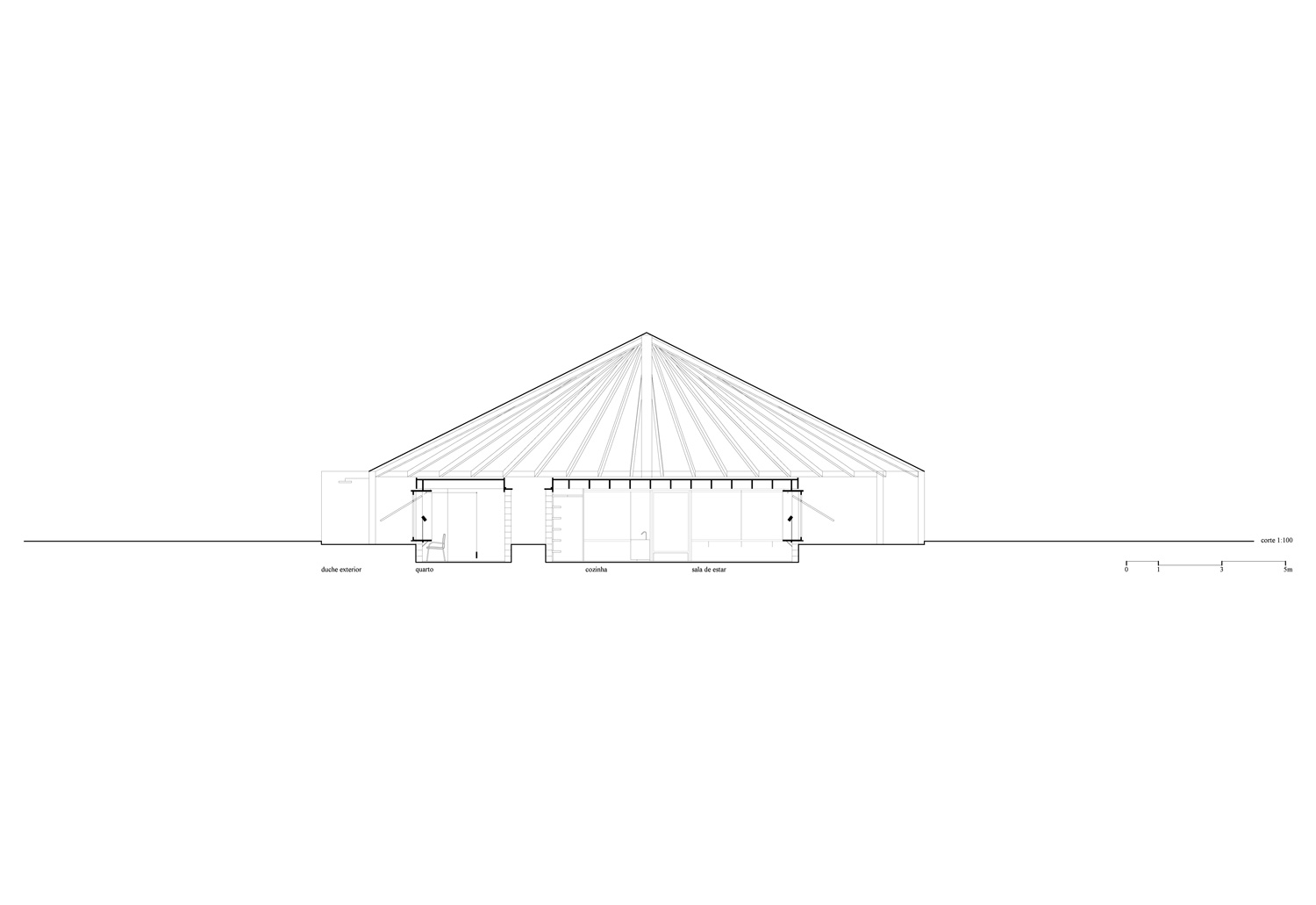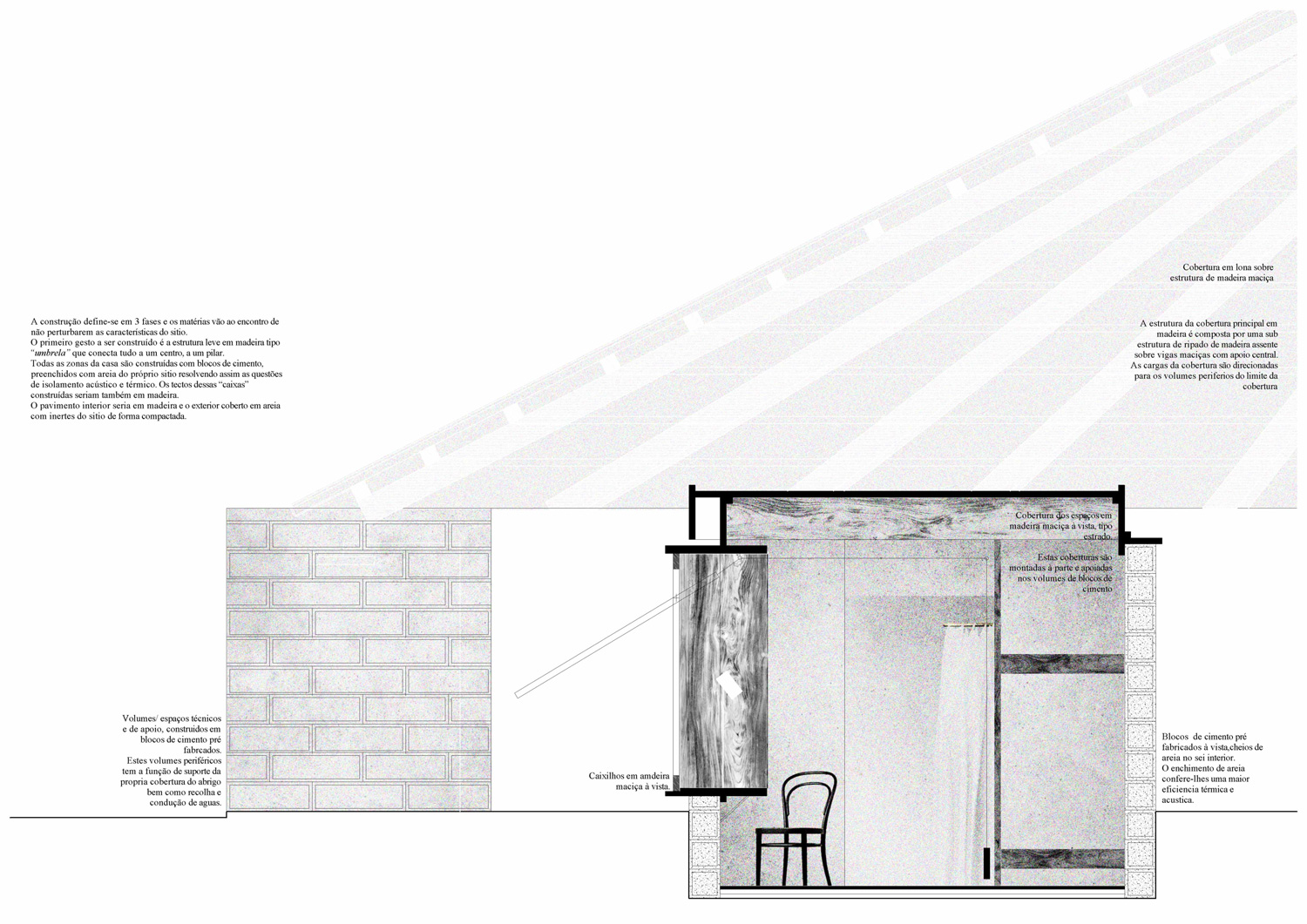☉ Two Houses in Ilhas Selvagens is a winning proposal by PONTOatelier developed in 2016. It is located in Madeira Portugal in a seaside setting. Its scale is small. Key material is concrete. Review the 2 proposals for the same competition.
The House in the “Ilha Selvagem Grande” marks the ocean with its harsh rock until it sinks into the sea. Some of the pre-existing facilities will be demolished and some won’t. The general situation to take into account is the fact that the house is going to be built at level 17, which is the same height as where the existing house ends.
It is also a place where the already existing concrete paths meet with each other to allow the tour through the island. The main body is developed along a longitudinal axis, guided and leaning towards the rock to be part of it. The house is the route of access to the island.
The access is through the landing of the small port of shearwaters, at level 13 and taking advantage of the foundations of the existing house there are some of the technical areas including a place to save the boat. After climbing a ladder up to level 17 we find ourselves on the porch.
This is the central point of the house. The porch divides two spaces. The day zone where the common spaces are (kitchen, living rooms, toilets, visits room, media room, etc.) and the night zone where the sleeping spaces with bathrooms are.
The day spaces, communicate with the sea through openings strategically placed as if they were lookout points. The night space turns to the rock where the sounds of the sea and the absence subtly echo. The porch is also the continuation of the route, the staircase that wraps around the stone oven continues until it meets the coverage, which is the route that connects to the rest of the island.
The new house is a new route that carries on the design of the paths that mark that place. The new coverage is also a pavement, a plateau on the sea, that serves as a new surveillance system where you can stop and look. The house does not try to stand out from the existing rock.
It is built in concrete and aggregates of the existing house demolition. The walls construction is made with lightweight concrete made “in situ”. Its dense and thick formation is composed of cement, rock dust and sand with volcanic sediments of the island itself. The thickness of the walls, between 40 and 55 cm, guarantees to meet the energy efficiency current demands.
It is drawn on that place and for that place. It doesn’t pretend to be natural but an element that communicates with the surrounding environment instead.
House of “Ilha Selvagem Pequena”
We dock in the Selvagem Pequena’s small port and walk into the plateau. It’s not like the other islands. As we approach the pyramid shape appears, and as we move forward until we get there we witness human absence. A central element is designed in the middle of this arid, exposed and flat land.
The first line draws a limit. That limit is the light wooden coverage structure, which protects underneath, from strong solar exposure, winds and nature itself. This structure is covered by a white canvas coated, which allows the filtered natural light. Under the coverage we are safe and protected, and it´s where the house begins.
Both interior and exterior spaces of the house are strategically placed. The house is divided in interior and exterior covered areas that relate with each other in different ways and perspectives. The common area (kitchen and living room) is separated from the private bedroom area, as if they were night and day areas.
The exterior covered areas are structural elements of the big coverage structure. These elements design a specific composition, inserted inside a 17x17m square and create the limits between indoors and outdoors. The house, as a shelter, hosts all its spaces underneath this big structure.
These volumes define interior and exterior. All of them with different functions. The exterior areas under the coverage have ground functions, living and social space functions. However other spaces appear at a superior level. Higher and above these volumes we have deposits of salt water and fresh water, as well as all the support materials. At this level one can also find living spaces, more private and protected against the outside.
The construction has three main stages and the materials are picked with the goal of creating a friendly relationship with the surroundings. The first this to be built is the light wooden, with umbrella structure that connects everything to a center column. All the different areas of the house are built in concrete blocks, filled with sand of that same place and this way solving the issues of acoustic and thermal isolation. The ceilings of these boxes would also be build in wood. The interior pavement would be made of wood and the exterior covered with sand and other materials from the island all compressed.
